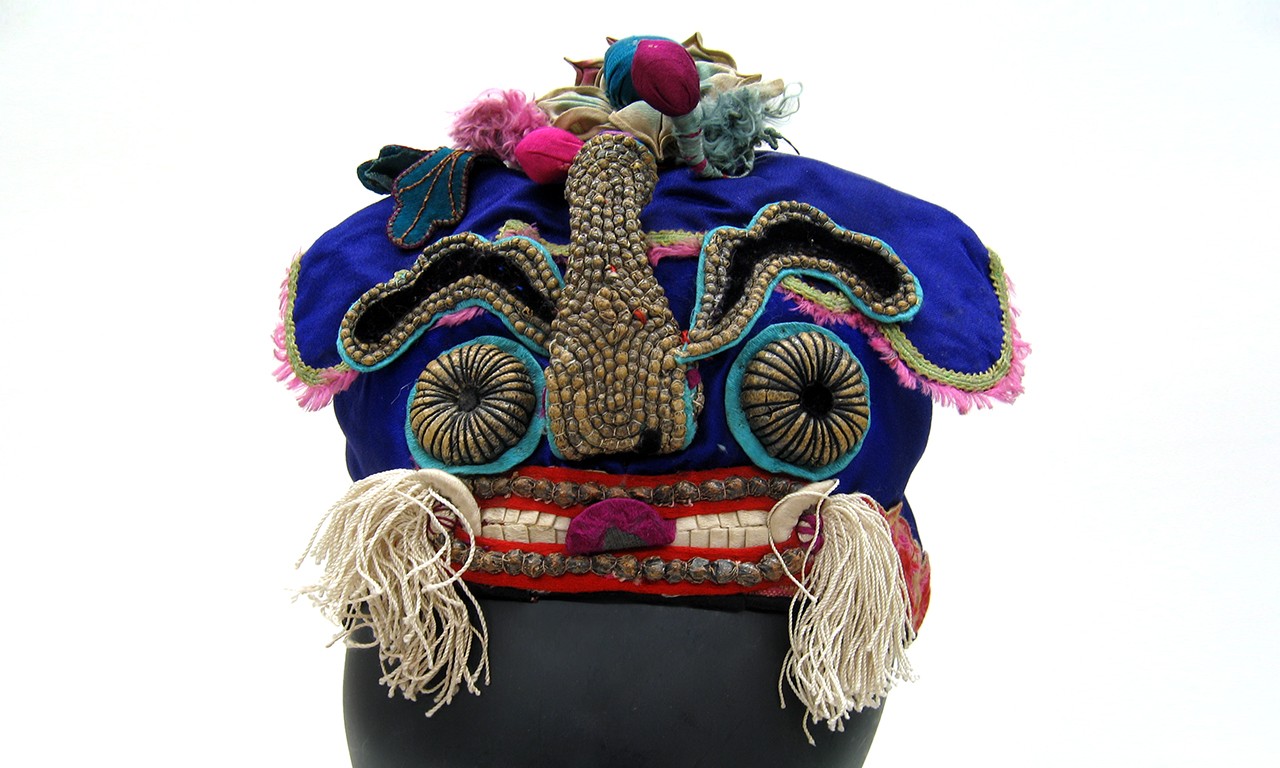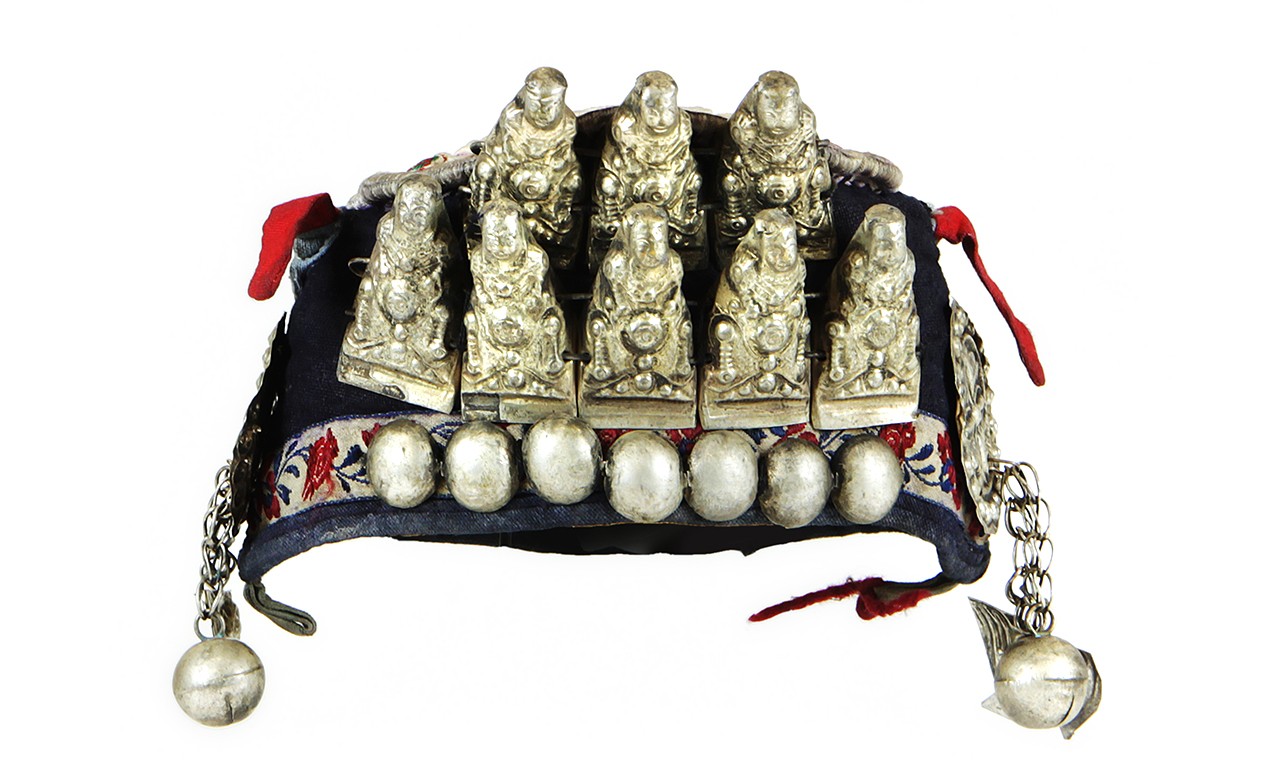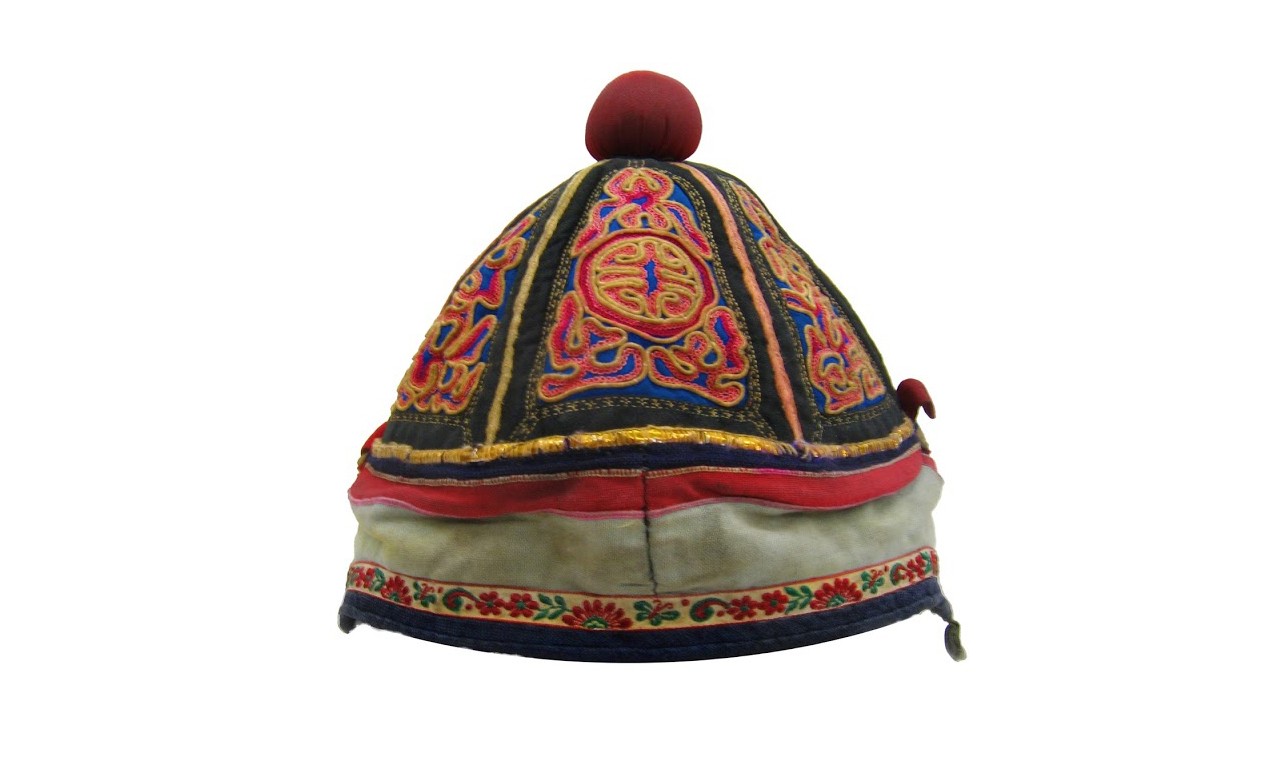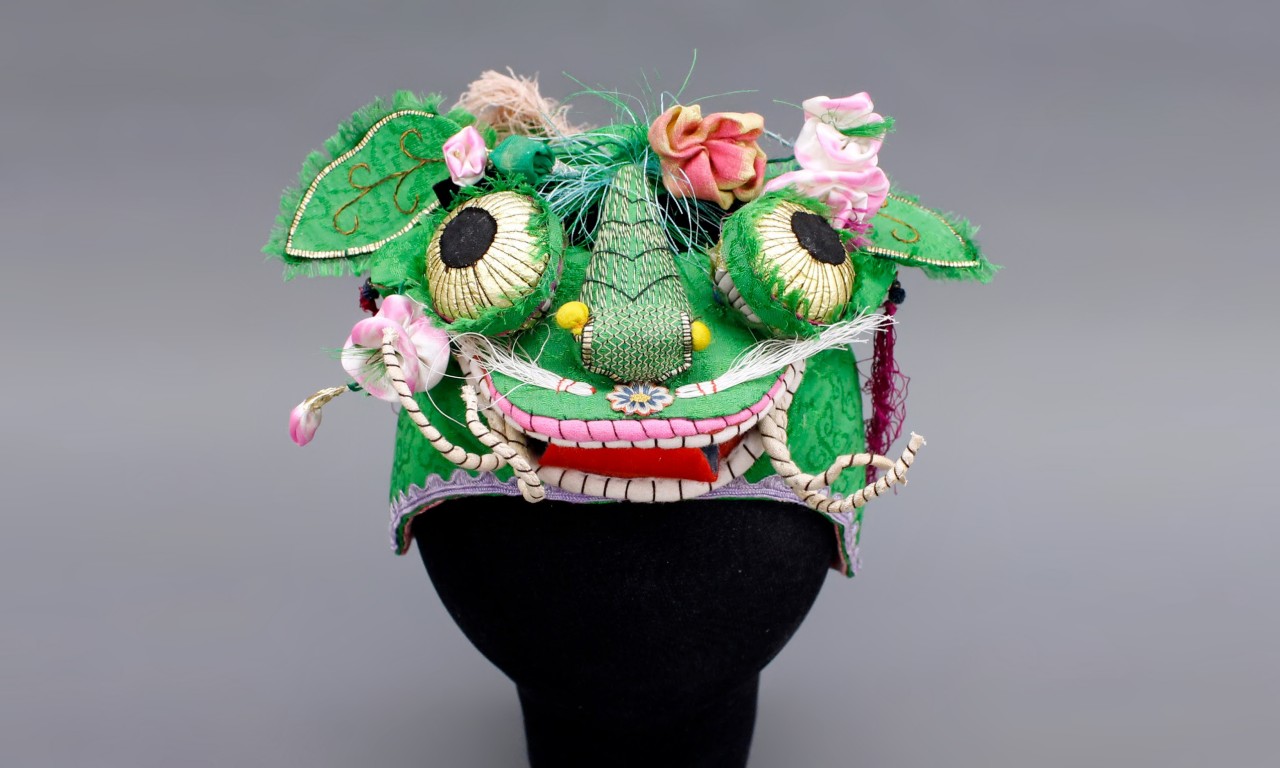 |
Children’s Festival Hat, Qing dynasty (1644-1912)
China
Cotton, silk and fiber; 11 x 10 in.
2001.1.47
Gift of Mr. and Mrs. Long Shung and Anne Shih |
Children of Many Hats
Medicine and hygiene standards in rural China during the Qing dynasty (1644–1912) meant that many children did not live to see the end of their first 100 days. This tragedy was regularly attributed to evil spirits and envious gods who harmed children out of spite and was combatted by wearing clothing covered in auspicious symbols, homophonic visual puns, and animal faces. As children grew older and the danger of passing away diminished, the focus shifted towards ensuring success in examinations along the road to becoming proper Manchu officers. Among the symbolically imbued gear children wore to defend against evil spirits and bring future success, the hat was crowned supreme. Four Qing dynasty hats from the Bowers Museum’s Collections illustrate how different hats would be used throughout a child’s life to serve these goals.

 |
Child’s Festival Hat, 20th Century
Miao culture; probably Guizhou Province, China
Cotton, silk and metal; 4 1/4 × 6 × 5 1/2 in.
2016.13.20
Gift of Mr. and Mrs. Long Shung and Anne Shih |
A Note on Medium
Qing dynasty children’s hats were primarily made of silk cut from old robes. As the second largest trade good in China after 1800, cotton was also prevalent among these hats and other fabrics could be purchased at market. Every household also kept a scrap bin with fragments which could be used for these hats. To adorn the hats, foil appliqué, sequins, ribbons, and wire were all used. When properly employed these mediums created wonderfully complex and joy-inspiring animal designs. Worked metals, particularly silver, were used by the wealthiest families for their children’s hats.
 |
Child’s Hat, Qing dynasty (1644-1912)
China
Silk and cotton; 22 x 10 in.
2001.1.14
Gift of Mr. and Mrs. Long Shung and Anne Shih |
If the Shou Fits
A child’s first hat was made by their mother, grandmothers, or aunts when they were a month old. Called the ‘rice bowl’ due to its overturned bowl shape, these tended to be simple in design, featuring symbols indicative of good fortune. On this Bowers Museum hat, we see a stylization of the shou symbol which is the Chinese character for longevity. Due to the homophonic nature of the Mandarin language, creative puns were often used in Chinese art and culture. For example, bats commonly decorated clothing because the Mandarin word for bat, fu, was spoken the same way as the word for happiness. By covering oneself in happiness they could ensure a cheerful future. Bright, warm colors like red, orange, and pink were used when available because of the good tidings they brought. Of course, in addition to their symbolic function, these hats also filled the very tangible niche of protecting children from the elements, likely one of the reasons why the wearing of hats was so readily adopted.

 |
Children’s Festival Hats, late Qing dynasty (1644-1912)
China
Cotton, silk, foil appliqué, wire and metal
2001.1.13, .50, .16
Gift of Mr. and Mrs. Long Shung and Anne Shih |
Playing the Fu
Perhaps the most unique in appearance, the second style of hats children wore were in the shapes of animal faces. These functioned as masks to fool evil entities into thinking the child was an animal. Dogs, lions, tigers, and dragons were among the adorably rendered disguises donned by children to scare off even the most sinister spirits. This dragon hat has a prominent flower as well as several additional flowers baubles designed to bounce as the child moved. These elements tend to indicate that the hat was made during the later Qing dynasty or in the early years of the Republic of China. A hat as decorated as this would likely have been reserved for days of celebrations like birthdays, New Year’s celebrations, and the Dragon Boat Festival. Sometimes rather than depicting a fierce animal, instead animals were chosen because they imparted special abilities on the wearer. The above hat made from red satin and royal blue embroidered trim does not include a face but does have attached cat ears. Because of their ability to see into the dark, wearing a hat with cat ears symbolically helped children to see and escape the evil spirits lurking around them at night.

 |
Children’s Festival Hat, late Qing dynasty (1644-1912)
China
Cotton, silk, foil appliqué and metal; 8 x 11 1/2 in.
2001.1.50
Gift of Anne and Long Shung Shih |
For the Final
As children grew older, the hats they wore transitioned away from trying to ward off danger, and instead focused on bringing good luck on examinations which could determine a child’s future. The animal shapes and bright colors of their childhood gave way to darker hues and more complicated symbolism versus the blatant animals of younger children’s hats. The skullcaps worn by adults were first donned during this stage of a child’s life, and the comfortable protections of youth disappeared.
Text and images may be under copyright. Please contact Collection Department for permission to use. References are available on request. Information subject to change upon further research.







Comments 1
Can you please give me the name and contact email of the person who wrote this blog? (This should always be listed in your blog articles.) Thank you.